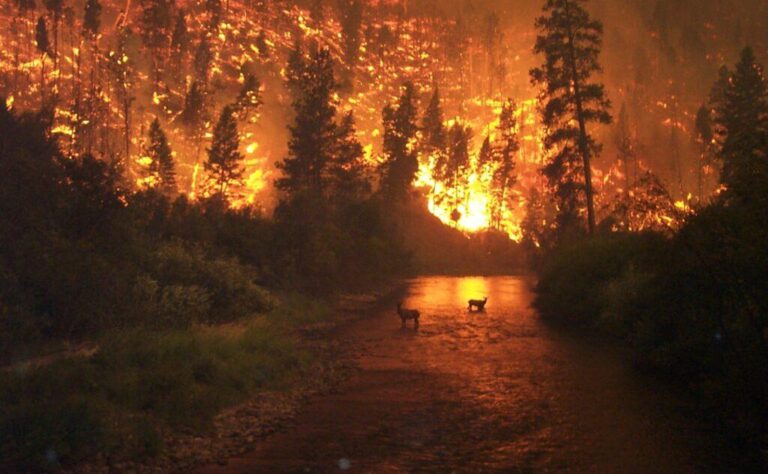Wildfires continue to rage across western Spain, prompting authorities to deploy the military in a desperate effort to contain the blazes. Despite ongoing firefighting operations, the fires have rapidly spread due to dry conditions and strong winds, threatening communities and vast areas of forest. Emergency services remain on high alert as officials work to protect residents and minimize damage to the region.
Fires Ravage Western Spain as Army Joins Firefighting Efforts
Blazing wildfires continue to engulf vast areas of western Spain, prompting authorities to escalate their emergency response. The persistent flames have forced the deployment of military units, supplementing the efforts of local firefighters battling the infernos under challenging conditions. Fierce winds and dry temperatures have exacerbated the situation, making containment difficult and threatening nearby communities and natural reserves.
- Regions affected: Castilla y LeĂłn, Extremadura, and Galicia
- Number of personnel involved: Over 500 firefighters and 200 soldiers
- Resources deployed: Firefighting aircraft, ground vehicles, and emergency shelters
| Day | Area Burned (hectares) | Fire Status |
|---|---|---|
| Monday | 3,200 | Active |
| Tuesday | 2,800 | Partially Contained |
| Wednesday | 4,500 | Active |
Officials warn that the unpredictable nature of the fires requires continuous vigilance and rapid coordination between firefighting units and the military. Evacuations remain in effect for several villages, with emergency services prioritizing civilian safety as they strive to control the relentless blaze. Environmental damage is mounting, with concerns over wildlife habitats and air quality compounding the crisis.
Impact on Local Communities and Environmental Damage Explored
The ongoing wildfires in western Spain have devastated numerous rural communities, disrupting daily life and forcing thousands to evacuate. Local residents face not only the immediate threat to their homes but also long-term economic hardships, as crops and livestock have been severely affected. Emergency services report that infrastructure including roads and power lines has suffered considerable damage, complicating relief efforts and isolating some villages. The social fabric of these communities is under immense strain, with schools temporarily closed and local businesses facing uncertain futures.
Environmental experts warn that the damage extends far beyond human settlements. Vast tracts of forest, home to diverse flora and fauna, are being reduced to ash, threatening biodiversity and contributing to soil erosion. The region’s delicate ecosystems, some of which are protected areas, are increasingly vulnerable to invasive species and altered microclimates. Key environmental impacts include:
- Loss of native vegetation: Hundreds of hectares of pine and oak forests destroyed.
- Wildlife displacement: Endangered species are forced from their habitats.
- Air quality decline: Toxic smoke affecting both urban and rural areas.
| Affected Sector | Estimated Loss | Current Status |
|---|---|---|
| Agriculture | €15 million | Under recovery |
| Forestry | 2000 hectares | Severe damage |
| Infrastructure | €8 million | Partially restored |
| Tourism | €5 million | Declining visitor numbers |
Experts Urge Enhanced Prevention Measures and Increased Funding for Fire Control
Authorities and environmental experts have called for a significant overhaul in wildfire prevention strategies amid the ongoing blaze ravaging western Spain. Recent deployments, including the army’s intervention, underscore the urgent need for a more proactive approach rather than reactive containment. Experts emphasize the implementation of advanced fire detection technologies, strategic forest management, and community education programs to mitigate future risks. Highlighted measures also include stricter regulations on agricultural burns and creating protective green belts around vulnerable villages.
In tandem with prevention efforts, there is a unanimous demand for increased funding directed toward fire control infrastructure and personnel. The current budget constraints have limited firefighting capacity, leading to slower response times and inadequate resources on the ground. Below is a breakdown of the key funding priorities recommended by specialists:
| Priority Area | Proposed Increase | Expected Benefit |
|---|---|---|
| Firefighting Equipment | +40% | Faster response and better containment |
| Personnel Training | +30% | Enhanced skill levels and safety |
| Early Detection Systems | +50% | Timely alerts and risk reduction |
- Community engagement programs to raise awareness and preparedness
- Investment in drone surveillance for real-time monitoring
- Reforestation with fire-resistant species to reduce fuel load
Key Takeaways
As wildfires continue to rage across western Spain, the deployment of the army underscores the severity of the crisis and the urgent need for coordinated efforts to contain the blazes. Authorities remain on high alert as they battle to protect communities and natural landscapes from further destruction. The situation remains fluid, with firefighters and emergency services working tirelessly amid challenging conditions. Updates will follow as more information becomes available.




